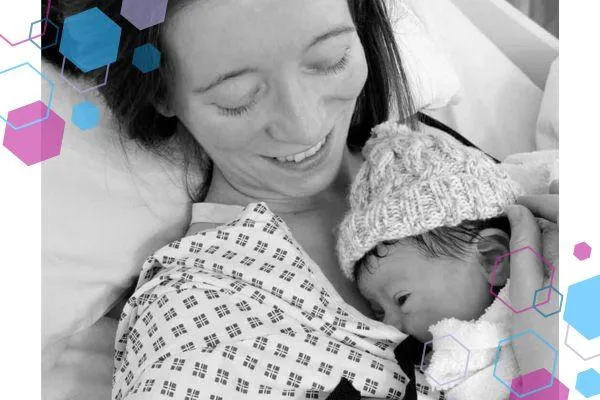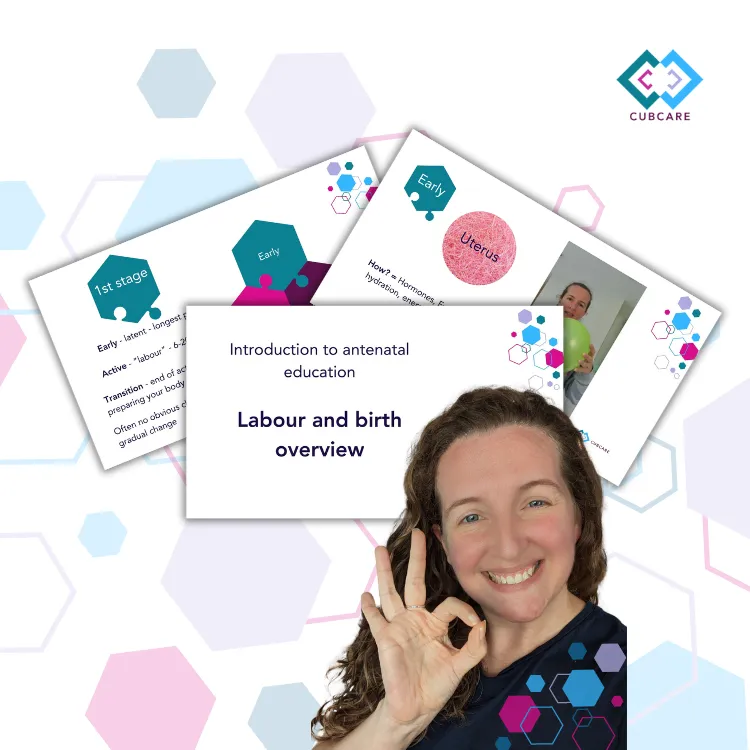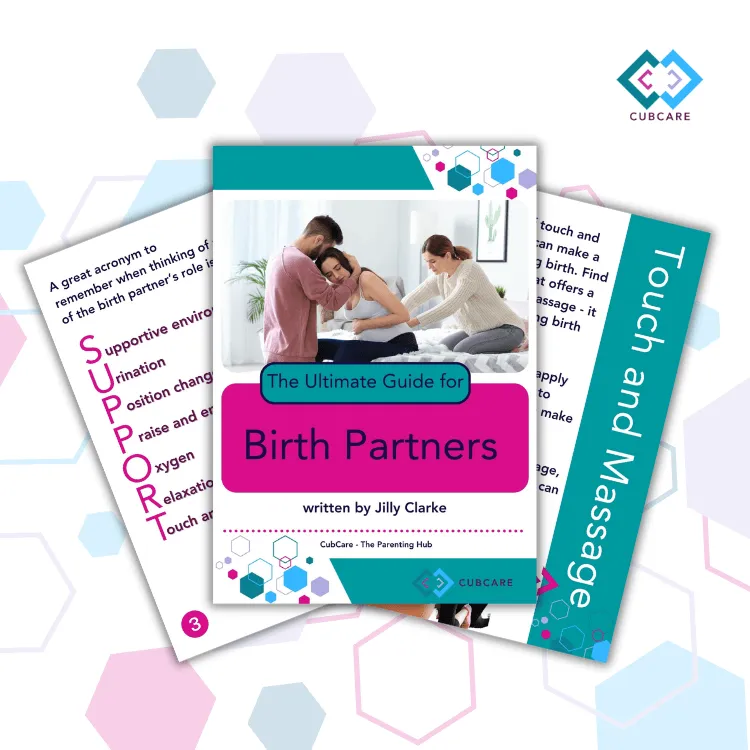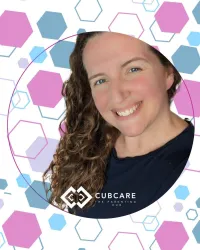We're an award winning Antenatal and Postnatal Education Platform 2025!
(read more here)
CubCare blogs.
From early pregnancy to newborn development.
Advice to help through pregnancy, birth and childhood.
BLOG

A planned c-section birth story at Lister
“I think it’s important to remember that it is powerful to make your own informed choice about your care and birth. Often it can feel like an elective C-section is the kind of birth that you are ‘not supposed’ to want and that the ideal is always an unassisted vaginal birth. Being confident and informed about different types of birth and my options allowed me to make a choice that was right for us in the circumstances.” - Emma
Birth Story Series – Emma's Lister Hospital planned C-section birth story
Here is a client’s story of threatened pre-term labour, ultimately leading to a C-section within our local hospital trust (East and North Hertfordshire NHS Trust – Lister hospital in Stevenage).
She attended my Antenatal course when she was expecting her first baby. Her story is a perfect example of how unexpected situations may arise throughout pregnancy, and how you can navigate each choice as they arise.
This story, like so many others, is an example of why medical teams are so helpful. When something may be going “wrong” such as pre-term labour, there are things that can be done to prepare in those situations and ensure things are in place to provide the best possible care.
It is also a story that highlights how a “simple offer” of extra scans, to provide reassurance, can lead to more interventions. Rarely is anything as black and white as it may seem. The act of looking for problems often serves to provide issues when there may not have been issues in the first place.
We are so lucky to have technology to help us, but there is no perfect growth measurement tool – it is relying on interpretation. Just like “risk” also relies on interpretation. You might think a “risk” of 0.1% is high, whilst somebody else might think that low. The figures are so important to know.
It is so important to highlight real life experiences and why it is important to have a sound knowledge of the medical system and they way it works with service users.
My role, with the help of these real life examples, is to offer up an alternative viewpoint so that you can make the decisions that are right for you.

Dealing with threatened pre-term labour
Emma's words, "I read lots of birth stories while I was pregnant but don’t remember any similar to ours. I think it’s really important to hear a range of stories and that all kinds of birth can be positive when you are able to make the best choices for you and your baby.
At 25 weeks I had an episode of ‘threatened preterm labour’. I was admitted to Lister and there was talk of having to emergency transfer to a hospital with specialist neonatal care. Thinking about it now, it is pretty scary, but at the time I think I was just in shock! I stayed on the ward a few days for observation but luckily nothing progressed and I was told to go home and carry on as normal."
Lister Hospital Neonatal unit - and very premature babies - words from Jilly
Lister hospital has a Neonatal Unit, so if your baby is born and requires medical attention it is likely they they will be able to stay on site. Some medical situations require more complex care, and more specialist teams, above what can be offered at Lister.
If your baby is potentially due to be born very prematurely, then a Neonatal Intensive Care Unit would be required. There are three specialist centres in the East of England region – Luton and Dunstable University Hospital, The Rosie Maternity Hospital in Cambridge, and Princess Alexandra Hospital in Harlow.
Where you would go depends on availability at the time and would be decided in discussion with you.
You can see the different levels of Neonatal Care throughout the country here: Infant journal
Dealing with conflicting information from each hospital visit
Back to Emma's story, "I was admitted once more for threatened preterm labour and made so many trips up to triage for painful contractions/Braxton hicks. I was often given conflicting advice or responses, it’s just Braxton hicks not contractions, Braxton hicks aren’t painful (while in pain!), Braxton hicks won’t show on the monitor (while the monitor showed contractions), Braxton hicks can’t be regular (although mine were often in the 3 in 10 labour pattern lasting for hours) and told come back to triage if it happens again but then turned away on arrival as I wasn’t ‘in enough pain’ for them to check me. This left me feeling anxious, overwhelmed and out of control.
I was offered growth scans, and it was nice to be able to see baby often but in hindsight the growth scans caused a lot of extra worry. We were first told he wasn’t growing, then that he’d caught up, then that he was big, then too big.
At my final growth scan at 39 weeks we were told he was almost off the top of my growth chart and getting bigger at too fast a rate. I was advised to either have an induction that evening or schedule a C-section."

Be mindful with scan predictions of baby's size - does predicted size even matter?
It is very interesting that expectant management – i.e. wait and see – wasn’t an option provided. It should be, according to NICE guidelines and in a perfectly valid option. There may have been other reasons behind the recommendation – but there almost always is the option to “wait and see”, and it mostly a perfectly valid choice.
(This study published in 2023, analysed the data from foetal growth scans in pregnancy against the final birth weight of these babies. The final analysis included 70 subjects with a total of 246 scans. The difference in actual growth predictions from scans against their estimated growth charts based on their birth weights gave a range of error from −17.5% to 38.3%. That’s a huge potential for error. An evaluation of systematic and random errors in ultrasound estimated fetal weight during serial ultrasound – Nicholas John Dudley, Sucheta Jindal, Helen Varley, 2023 (sagepub.com)
This article (The management of error in ultrasound fetal growth monitoring – PMC (nih.gov)) published in 2020 highlights the potential for errors in growth predictions from scans to create issues.
A -10.5% error margin in one scan could result in a baby falling a centile on their growth chart. A +10.5% on the next scan could mean they’ve appeared to jump up a centile. And no error on the final scan could suggest a growth restriction.
The further on in pregnancy, the more room for error there is. Plus, NICE guidelines don't recommend induction for a predicted large baby.
Whilst there are increased risks associated with a large baby, there are similar risks associated with induction. And, many of the risks associated with a large baby can be mitigated by being active, allowing space for baby to move as they need to - shoulder dystocia can happen to babies who aren't large too!
Taking an active decision - planning for a C-section
Neither option was what I originally wanted but the thought of potentially a lot of waiting around on the ward during an induction really put me off. I had found staying on the ward so horrible, stressful and overwhelming and I knew those feelings were not ones I wanted to associate with my baby’s birth, especially after feeling them throughout pregnancy. I opted for a C-section to protect my mental health which felt like the safest option for me and baby.
Leo was born via C-section the day before his due date. I actually enjoyed the birth despite it not being what I had pictured. I felt calmer, more in control and less anxious than I had for months and was excited to meet our baby. I wasn’t scared of the surgery maybe just a bit apprehensive but the team on the day, especially the anaesthetist, were so lovely and really put us at ease. We had our own music playing, had delayed cord clamping and immediate skin to skin.
Leo was born at 7lb 12oz, so the growth scans were wildly off!
But, I think it’s important to remember that it is powerful to make your own informed choice about your care and birth. Often it can feel like an elective C-section is the kind of birth that you are ‘not supposed’ to want and that the ideal is always an unassisted vaginal birth. Being confident and informed about different types of birth and my options allowed me to make a choice that was right for us in the circumstances.
Words from Jilly - C-sections can be a positive choice
I absolutely agree. That is all I ever want for clients, is that they feel confident and informed enough that they can go and make their own choices.
I wish that clients wouldn’t need to arm themselves so much information in order to enter into the medical system – but the best way to come out of it feeling in control, is to learn as much as you possibly can. Don’t rely on anybody but yourself to search for that information. A knowledgeable antenatal teacher can help you to understand your options – but you are the person best qualified to make decisions about your own situation!
A C-section, particularly a semi-planned on such as this, can have so many elements of your choosing. There is generally no need to hurry the procedure so skin-to-skin, maternal assisted delivery, a smaller incision to allow baby to be born slower and more like a vaginal delivery are all perfectly possible.
Hypnobirthing techniques can be really useful during a C-section – breathing and relaxation can keep you calm, can keep your oxygen, heartrate and blood pressure under control. Being anxious is such a normal reaction to major surgery, and hypnobirthing can help ease anxiety.
Huge congratulations Emma, thank you so much for sharing your story.
Even when obstacles are thrown in their path, having knowledge and the education behind you, you CAN have an amazing birth experience.
That's why we have our Antenatal Course (both in person and online).
Antenatal Course in person
Antenatal Course online
Birth Partner course (included in our Antenatal course)
Refresher Antenatal Course in person
Refresher Antenatal Course online
Easily navigate to our most popular Blog categories
Download our Freebies

Labour and Birth
Watch our introduction to antenatal education webinar, our labour and birth overview - to start your antenatal education journey. Understanding the process, and what you can do to influence it.

Pregnancy Planner
Free Pregnancy Planner to help you prepare for a little one. Prepare your body, your mind, your finances and your home. Get organised, feel good and prepare for an active, positive birth.

Birth Partner Guide
Your ultimate guide to being the best birth partner during pregnancy, birth and recovery. Learn what you need to do, and what you need to learn to be the best birth partner possible.

Expecting Again Guide
Your ultimate guide to preparing for another birth and an extra baby. Our top tips for navigating pregnancy and birth, and helping your older ones to transition into their new role as a big sibling.
Based in Welwyn Hatfield, offering local pregnancy support and doula services across Hertfordshire: St Albans, Hatfield, Welwyn Garden City, Potters Bar, Stevenage, Harpenden, Hitchin, Barnet, Mill Hill and surrounding areas.
Online antenatal and postnatal education available UK-wide.
© Copyright 2025 CubCare The Parenting Hub. CubCare is operated by The Birth and Baby Company Ltd. Company No. 15655287
Privacy Policy | Terms & Conditions | Medical Disclaimer | Inclusivity and Accessibility

